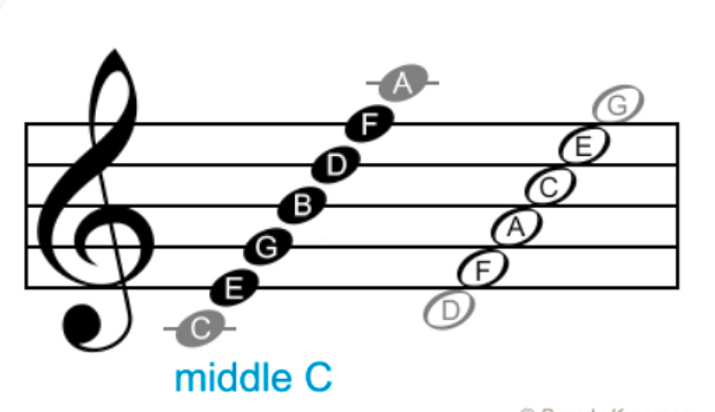Explore the Michelle Ostrove Blog
Did you know that singing and playing piano are good for you on many levels. Every singer and pianist have one thing in common, you need to be in tune and play or sing the correct notes. Learning to consistently sing on pitch playing the correct notes on the piano is an is an important first step. Learning to sing or play an instrument can benefit your body in many ways. There are many perks for any singer or musician,…
Read MoreIf you want to develop good technique as a singer or pianist, learning how to play or sing scales is key! What is a scale? A scale is a sequence of related notes moving up or down the piano, like a ladder. Each scale begins on its key note (let’s use middle C) and goes up the piano C, D, E, F, G, A, B, to the next highest C. The major and minor scales consists of 8 notes, which…
Read MoreThe summer months are filled with fun and outdoors activities, it’s important to be conscientious of the weather and environment to keep you voice in tip-top shape. Hot weather can create many problems stemming from dehydration. It’s vital to keep yourself hydrated to prevent a dry throat and vocal cords. Your throat and mouth need the lubrication to sing. A dry throat will really impact your tone, so drink plenty of water, coconut water and grapes; all three help with…
Read MoreA time signature tells you how to count in the song. For instance, if you’ve ever been to a basketball game and they play the song “We Will Rock You”, I’m sure you’ve clapped to the beat or stomped your feet 1,2,3,4, 1,2,3,4, 1,2,3,4. The time signature is 4/4 for that song and the top number (4) represents the number of beats per measure or what you would count in each measure 1,2,3,4 over and over. The time signature consist…
Read MoreA tie and a slur can be somewhat confusing to a beginner. They look exactly the same, but have completely different functions. I have attached a picture of a tie, which is the curved line underneath the two notes. So how do you tell them apart? A tie is a curved line that connects two notes that are the same (two middle C’s), which means they are on the same line or space. The two notes connected by a tie…
Read MoreLearning to sing in head register may be one of the most important things you can learn as a singer. Singing in the head register will help you expand your vocal range and hit those high notes! So, what is your head voice and how do you access it? The head voice is an old school Italian term used to describe notes in the top part of the vocal range. The Italian singers called it head voice because they noticed…
Read MoreThe greatest singers use this “chest voice” sound in their singing. Most men speak entirely within their chest voice, while most women use both their chest and middle voices to speak; this is referred to as “speech level”. It begins and ends in different places for everyone, depending on your voice type and range. The term chest voice was invented by old school Italian singers; used to describe notes in the lower range of the singing voice. They called it…
Read MoreThe picture attached is called the treble staff, which consists of five lines and four spaces (Middle C sits below the staff). It includes of all the notes from middle C, moving to the right, up to F on the top line. The treble clef (or G clef) is the music symbol on the left side of the staff. In the beginning, to help you remember the lines on the staff, use this saying “Every Good Boy Does Fine”. You…
Read MoreHaving a clear picture in your mind of what you want as a singer, songwriter, pianist (musician) is the biggest step. If you cannot visualize it, it’s hard to accomplish what you don’t see in your mind. It’s important to stay current in music, technology, social media (vital) and knowing what the new generation is interested in. What is everyone listening to, who are the new artists, producers, musicians in the field. How are the new artists writing music, who’s…
Read MoreThe bass clef staff is made up of five lines and four spaces, just like the treble clef staff. If you look at the picture attached, you will see the middle C note on a line (middle C has a leger line going through the middle of the note). The note below middle C is B, which is on a space. This pattern of line – space – line – space continues all the way down the bass clef staff,…
Read More








